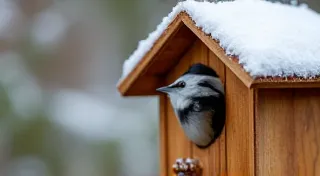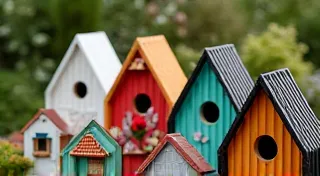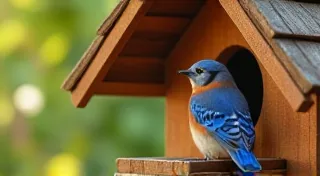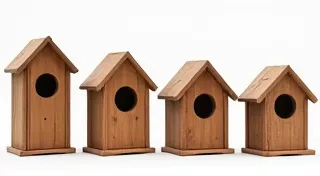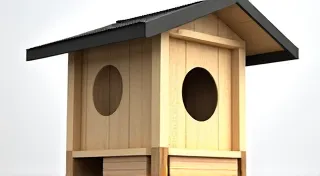DIY Purple Martin House: Design & Construction for Success
Purple martins are beloved for their aerial acrobatics and insect-eating habits. Attracting them to your yard can be incredibly rewarding, and building your own purple martin house is a fantastic woodworking project that combines creativity and wildlife conservation. This article provides a detailed guide to designing and constructing a successful multi-compartment purple martin house.
Understanding Purple Martin Housing Needs
Unlike many songbirds, purple martins are colonial nesters, meaning they prefer to live in groups. This is why a single bird house simply won’t do. They require a multi-compartment house capable of accommodating multiple families. A well-designed house not only provides shelter but also protects them from the elements and predators. While the core structure of a martin house follows certain principles, understanding the broader context of birdhouse design can be helpful. For example, if you're new to woodworking projects of this nature, you might find it interesting to explore different birdhouse roof designs to understand the importance of weather protection.
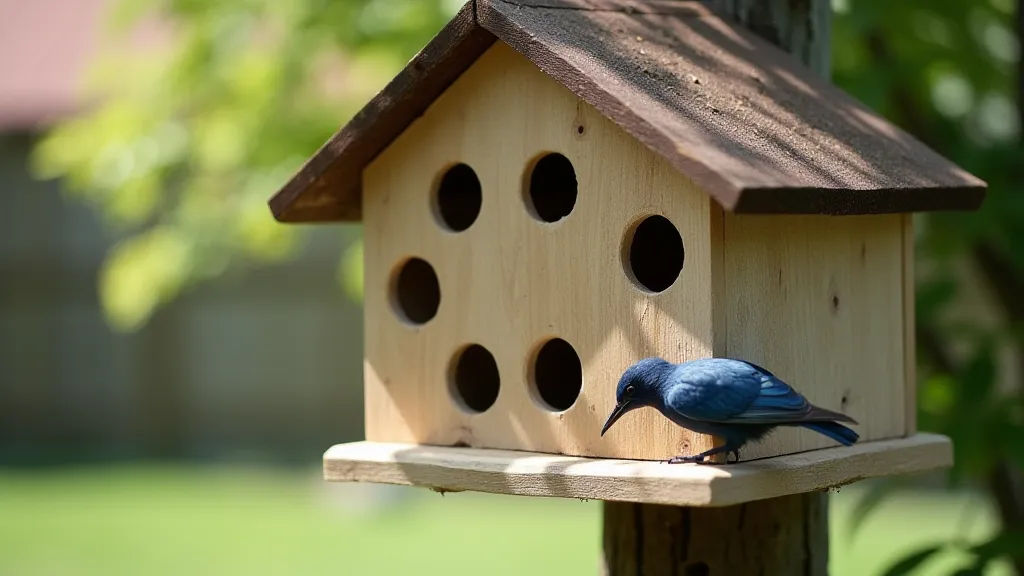
Design Considerations: Size, Compartments, and Placement
Here's a breakdown of key design elements:
- Compartment Size: Each compartment should be approximately 6” x 3” x 6” (internal dimensions). This provides adequate space for the birds and their fledglings.
- Number of Compartments: Start with at least four compartments. More is generally better, as it reduces competition between pairs. Larger properties can support larger houses. Consider the overall dimensions when planning; you’ll want to ensure the finished structure is stable and appropriately sized. The scale of your martin house can really impact the overall aesthetic of your yard, and it's worth considering how other structures might complement it. If you are looking to incorporate other bird habitats alongside your martin house, creating a robin nesting platform could provide valuable diversity in your backyard avian community.
- Entrance Hole Size: Use a 2 1/8" diameter entrance hole. This size deters larger birds like starlings from taking over the compartments.
- Ventilation and Drainage: Ensure adequate ventilation holes near the top of each compartment and drainage holes in the floor to prevent moisture build-up. Proper drainage is critical to prevent mold and mildew, contributing to a healthier environment for the martins.
- Roof Overhang: A generous roof overhang protects the entrance holes from rain and sun. The overhang’s effectiveness depends heavily on the overall design of the roof itself. Consider the impact of different materials and angles – a well-designed roof not only protects the inhabitants but also contributes to the visual appeal of your creation.
- Predator Protection: Consider incorporating a predator guard around the pole to deter snakes, raccoons, and cats. This is a critical safety feature that should be carefully considered during construction. Think about the whole environment – are there nearby trees that could provide access for predators? Strategic placement and proactive measures are essential for ensuring the safety of your martin colony.
Materials & Tools
You’ll need:
- Wood: Untreated cedar or redwood are excellent choices due to their weather resistance. Plywood is also suitable, but ensure it’s exterior-grade. Selecting the right wood is crucial for longevity and the overall success of the project. You might be surprised by the variety of dimensions and construction methods used in other bird houses – exploring bird house dimensions can provide valuable insight. Consider also the sustainability of your wood choices - responsibly sourced materials contribute to a more environmentally friendly project.
- Fasteners: Galvanized or stainless steel screws are essential to prevent rust.
- Tools: Saw (circular saw or hand saw), drill, screwdriver, measuring tape, pencil, safety glasses.
Step-by-Step Construction
- Cut the Wood: Cut the wood pieces according to your plan. Accurate measurements are critical for a well-fitting house. Double-check your measurements before cutting to avoid costly errors. Accurate cutting also minimizes wood waste, which is another benefit of careful planning.
- Assemble the Compartments: Build each compartment individually, ensuring the interior dimensions are correct. Precision is key; slight errors can accumulate and affect the overall fit. Consider using jigs and templates to ensure uniformity across all compartments.
- Attach the Compartments to the Base: Securely attach the compartments to the base of the house using screws. Use a level to ensure the house is perfectly horizontal. A stable base is critical for the structural integrity of the entire martin house.
- Construct the Roof: Build the roof with a sufficient overhang and attach it securely to the rest of the structure. Consider adding a slight pitch to the roof to aid in water runoff. A well-sealed roof will significantly extend the lifespan of your martin house.
- Install Ventilation & Drainage Holes: Drill ventilation holes near the top of the compartments and drainage holes in the floor. Use a drill bit appropriate for the wood type to prevent splintering. Ensure the ventilation holes are strategically placed to maximize airflow without compromising the structural integrity of the roof.
- Mounting: The house should be mounted on a sturdy pole, at least 12-15 feet above the ground. A well-anchored pole is essential for stability, particularly in windy conditions. Pole stability is paramount, as swaying or movement can frighten martins and potentially damage the structure.
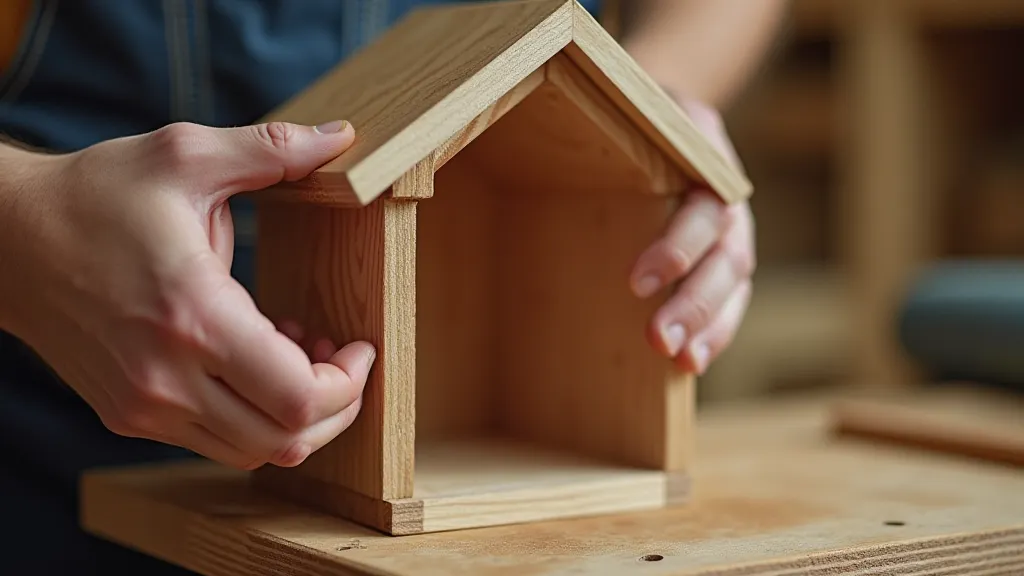
Attracting Purple Martins
Building the house is just the first step. Here’s how to entice these birds to move in:
- Location: Purple martins prefer open areas with a clear flight path. They need ample space to maneuver and forage. Avoid placing the house near dense vegetation or areas with heavy human activity.
- Water Source: A birdbath or small pond nearby can be attractive. Providing fresh water is always a good idea for attracting various bird species. Regularly cleaning the water source is important to prevent the spread of disease.
- Martins’ Music: Playing recordings of purple martin calls can sometimes help attract them, but be mindful of disturbing other wildlife. This method can be controversial and may not always be effective. Always prioritize the well-being of the broader ecosystem when employing attracting techniques.
- Patience: It may take time for purple martins to discover your new house. Don’t get discouraged if they don’t move in immediately. Persistence is key. Consider observing other martin colonies in your area to understand their preferred habitats and behaviors.
Maintenance and Cleaning
Annual cleaning is crucial. After the nesting season (typically late summer/early fall), remove all nesting material from the compartments. This helps to control parasites and keeps the house clean for the following year. Proper maintenance extends the life of your martin house and ensures a healthy environment for the birds. Consider that other types of birdhouses require similar upkeep, and understanding those basic principles can inform your martin house maintenance routine. Regular inspection for signs of damage or wear is also vital to proactively address any issues and prevent more significant problems down the line.
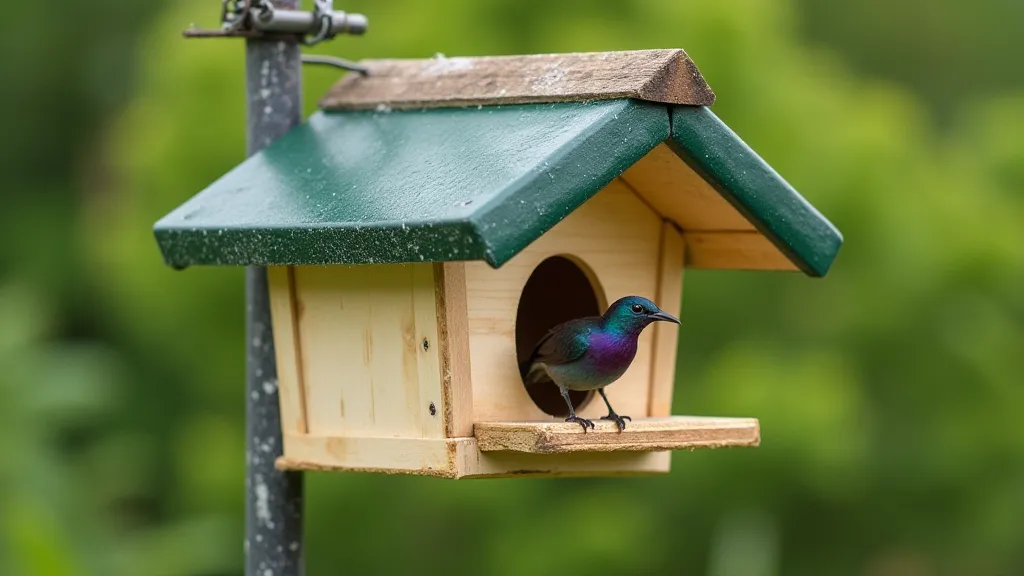
Beyond the Basic Martin House – Expanding Your Project
Once you’re comfortable with building a standard multi-compartment martin house, you might want to consider expanding your avian habitat. You could build a nesting platform for robins, adding diversity to your backyard and providing a welcoming environment for a wider range of bird species. If you'd like to broaden your backyard avian haven, consider the nuances of designing a robin nesting platform to create a varied and appealing ecosystem.
Troubleshooting Common Issues
Even with careful planning and construction, you may encounter a few challenges. Starlings and House Sparrows are common pests that can compete with martins for nesting sites. Consistent monitoring and removal of unwanted nests are essential. Similarly, predators like raccoons and snakes can pose a threat. Employing predator guards and careful site selection can mitigate these risks. Be proactive and persistent in protecting your martin colony.
Long-Term Sustainability and Conservation
Building a purple martin house is more than just a woodworking project; it's a contribution to wildlife conservation. Purple martin populations have declined in recent years, and providing them with suitable nesting sites is vital for their survival. By creating a welcoming habitat, you are playing a role in preserving these magnificent birds for future generations. Consider joining local birdwatching groups and participating in citizen science projects to contribute further to conservation efforts.
Conclusion
Building a purple martin house is a rewarding project that combines woodworking skills with a contribution to wildlife conservation. With careful planning, precise construction, and a little patience, you can create a welcoming home for these fascinating birds and enjoy the beauty and wonder of a thriving martin colony. The satisfaction of seeing these birds flourish in your own backyard is a truly rewarding experience, solidifying your commitment to both craftsmanship and conservation.
